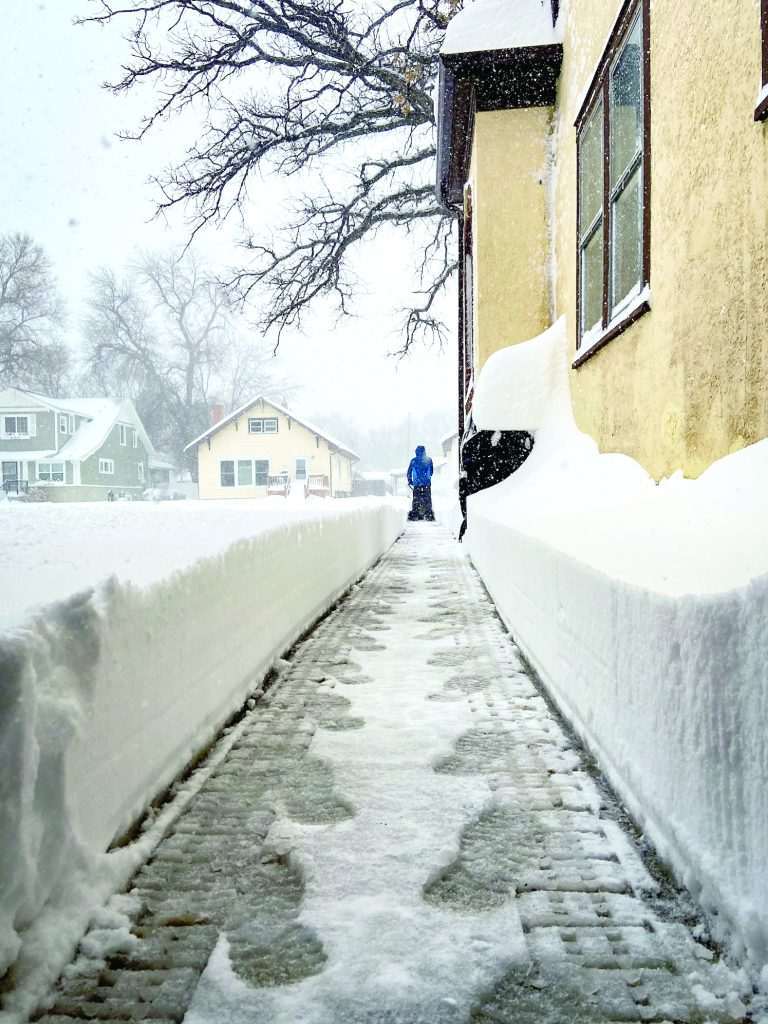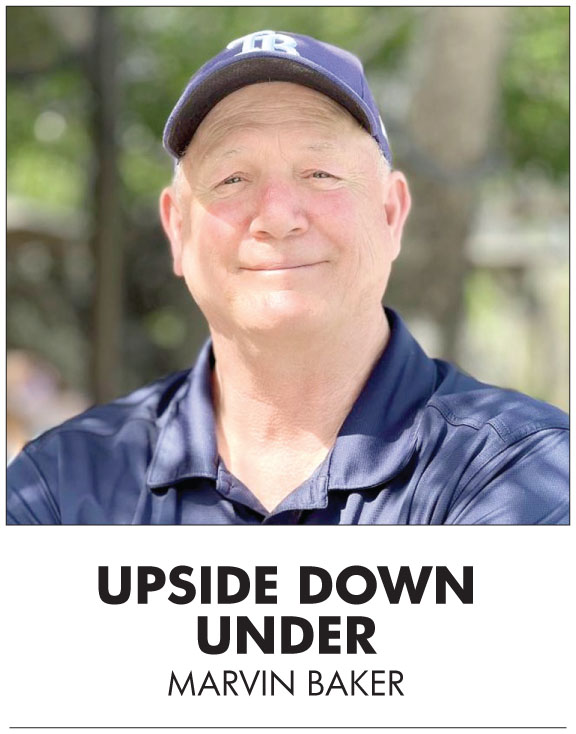“Did you bring sunglasses?” my four-year-old asked from the back seat. “It’s so bright,” he added, squinting and shielding his eyes with mitten-clad hands. He was right. The snow blanketed the ground, and the trees were covered in delicate layers of snow and ice, like lace clinging to the branches. The vast landscape was white, reflective, and brilliant.
“See the trees? They’re covered in hoar frost this morning.” I replied, passing him the spare aviators my husband keeps in the car for just such occasions.
He laughed, thinking I was making the term up. After some convincing and repeating the words, he accepted that I wasn’t joking. Once at our destination, he pointed at the sky and said, “Look! The sun looks weird.”
Sure enough, the sun did look strange, surrounded by a full halo of light. When I told him that was a “Sun Dog,” the giggles and convincing started all over again.
A few days later, I heard the term “Clipper” on the nightly weather report. Although the meteorologist said it casually as though everyone should know what it was, I had to Google it.

Amy Allender photo
Later that week, a friend asked me the difference between a winter storm and a squall.
There seems to be a deluge of winter terms around here. If it’s confusing for me, maybe it’s confusing for you, too. Today, I’ve rounded up fifteen winter weather definitions so we can all learn a little more and sound more nuanced when discussing the cold. (Definitions have been pulled from the National Weather Service, some have been edited for length and clarity.)
Alberta Clipper (Clipper) – A fast-moving, low-pressure system originating in the Canadian Rockies that brings light snow, strong winds, and a sharp drop in temperature.
Blizzard – A storm with large amounts of snow or blowing snow, winds exceeding 35 mph, and visibility less than 1/4 mile for at least three hours.
Freezing Rain – Liquid precipitation that freezes on contact, creating a glaze of ice on surfaces like roads, trees, and power lines.
Ground Blizzard – Strong winds lift existing snow off the ground, causing whiteout conditions even without new snowfall. Visibility is sustained at less than 1/4 mile, with winds up to 50-60 mph.
Hoar Frost – Ice crystals that form on surfaces like trees and fences during cold, clear nights. It looks like a light, feathery coating of frost and is caused by sublimation when water vapor turns directly into ice.
Ice Fog – Fog that forms in extremely cold temperatures when water vapor freezes into tiny ice crystals, creating a misty appearance.
Ice Storm – Occurs when freezing rain accumulates on surfaces, creating a layer of ice at least 0.25 inches thick. This can lead to hazardous travel, power outages, and significant damage.
Light Pillars – Vertical beams of light that appear above or below a light source, caused by light reflecting off ice crystals in the atmosphere in extremely cold conditions.
Polar Vortex – A large area of low pressure and cold air surrounding the Earth’s poles that occasionally moves south, bringing prolonged extreme cold.
Sleet (Ice Pellets) – Snowflakes partially melt as they fall through a layer of warm air, then refreeze as ice pellets when they pass through freezing air near the ground. Sleet bounces on impact and can accumulate like snow.
Snow Squall – An intense, short-lived burst of heavy snowfall that sharply reduces visibility and is often accompanied by gusty winds.
Sun Dog – Bright spots of light that appear on either side of the sun, often in a halo, caused by sunlight refracting through ice crystals in the atmosphere. A frequent sight on extremely cold days.
Whiteout – A condition where blowing snow reduces visibility to near zero, making it impossible to discern the horizon or landmarks.
Windchill – The perceived temperature felt on exposed skin due to the combination of air temperature and wind speed. It can make a cold day feel much colder.
Winter Storm – A broad term for various types of winter weather, such as heavy snowfall, freezing rain, or sleet, without the specific criteria of high winds and reduced visibility required for a blizzard.
Hopefully, these definitions help you as much as they do me. As I often say to my kids, “Words matter.” I’m not from around here, but I want to use the right terms as I bear the cold and experience the majesty of these sometimes-extreme conditions.
For more stories from life in Hotdish Land, join me at amyallender.com, or on Instagram @HeyMinot or @amy_allender.












